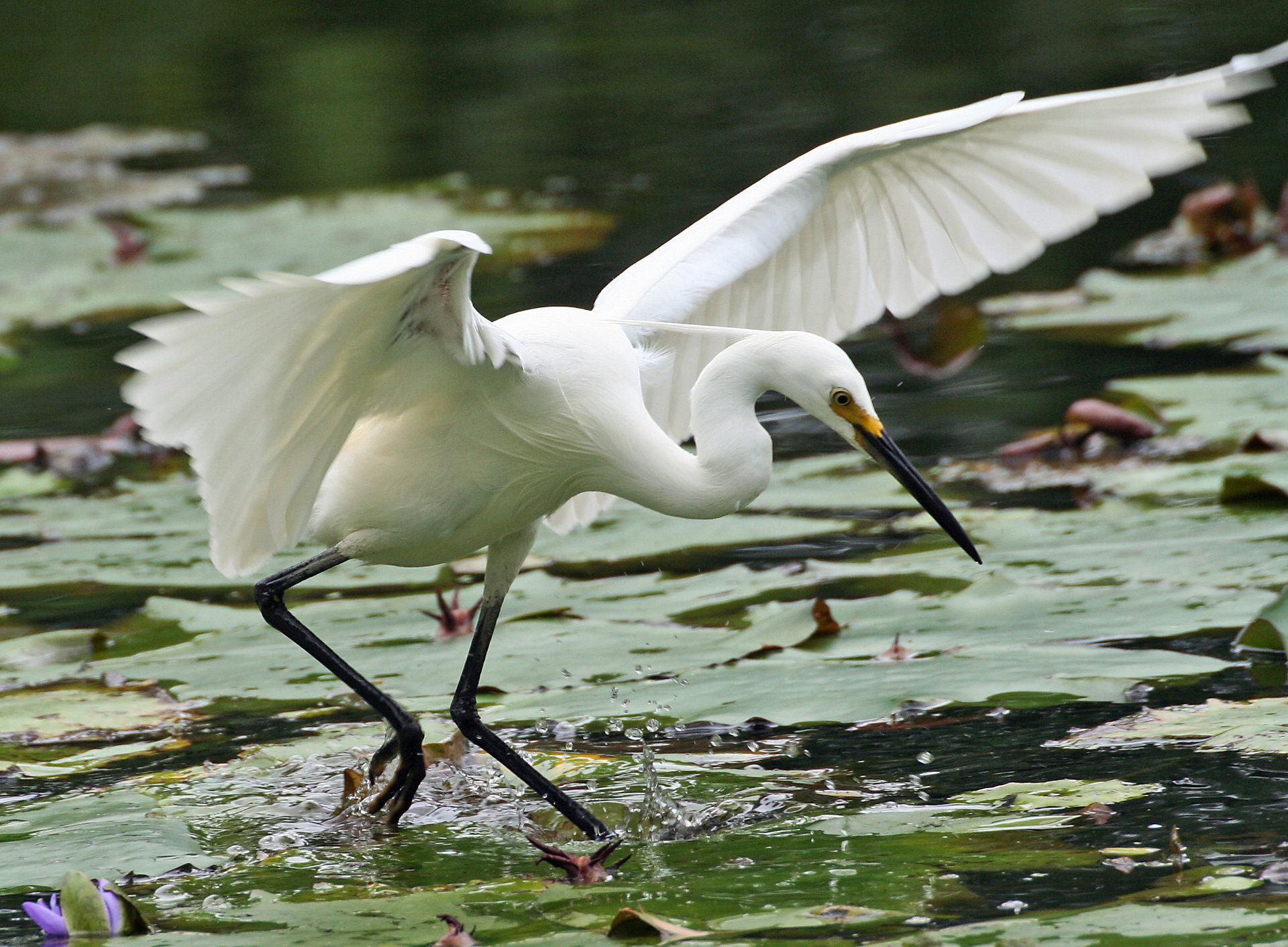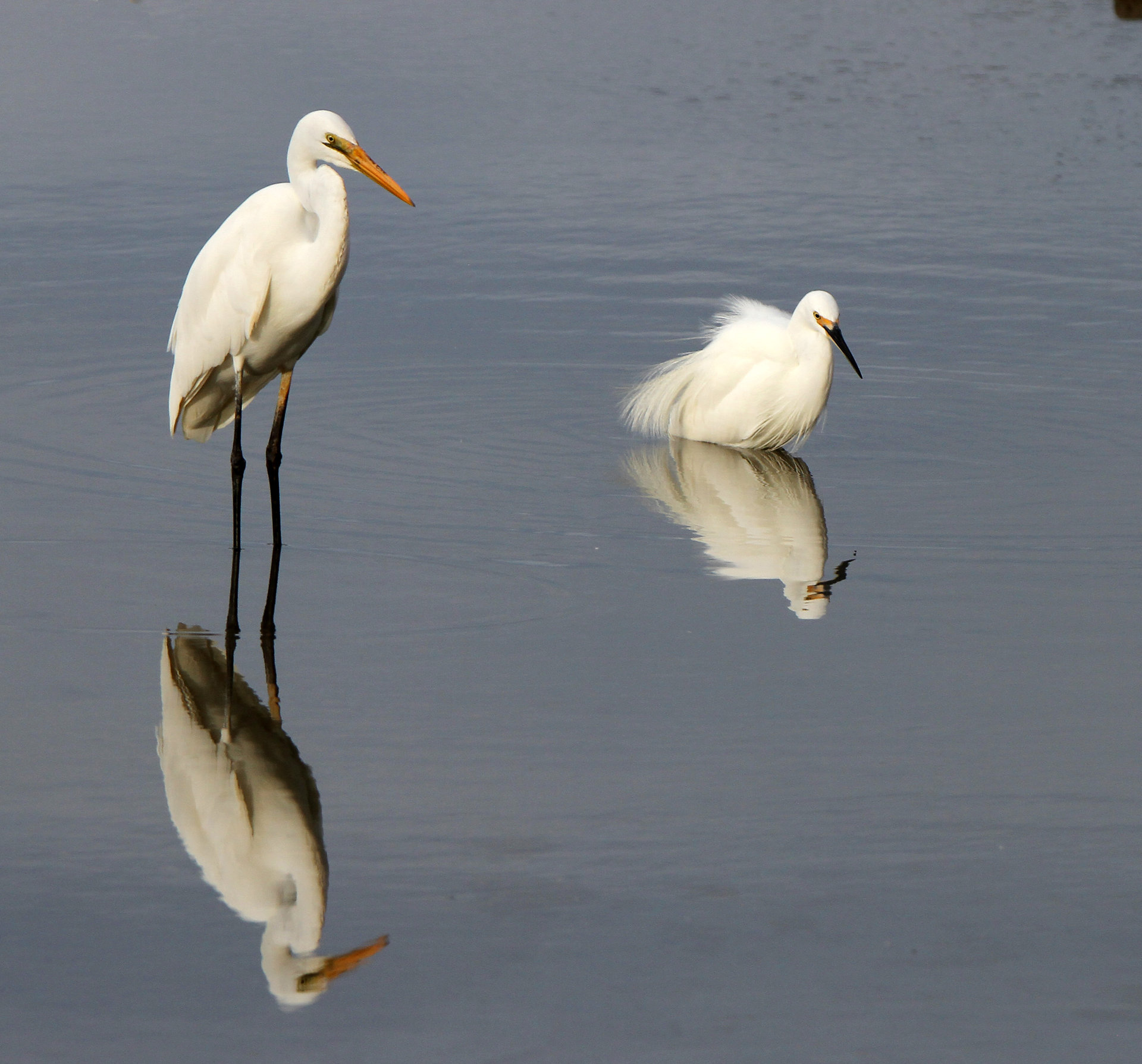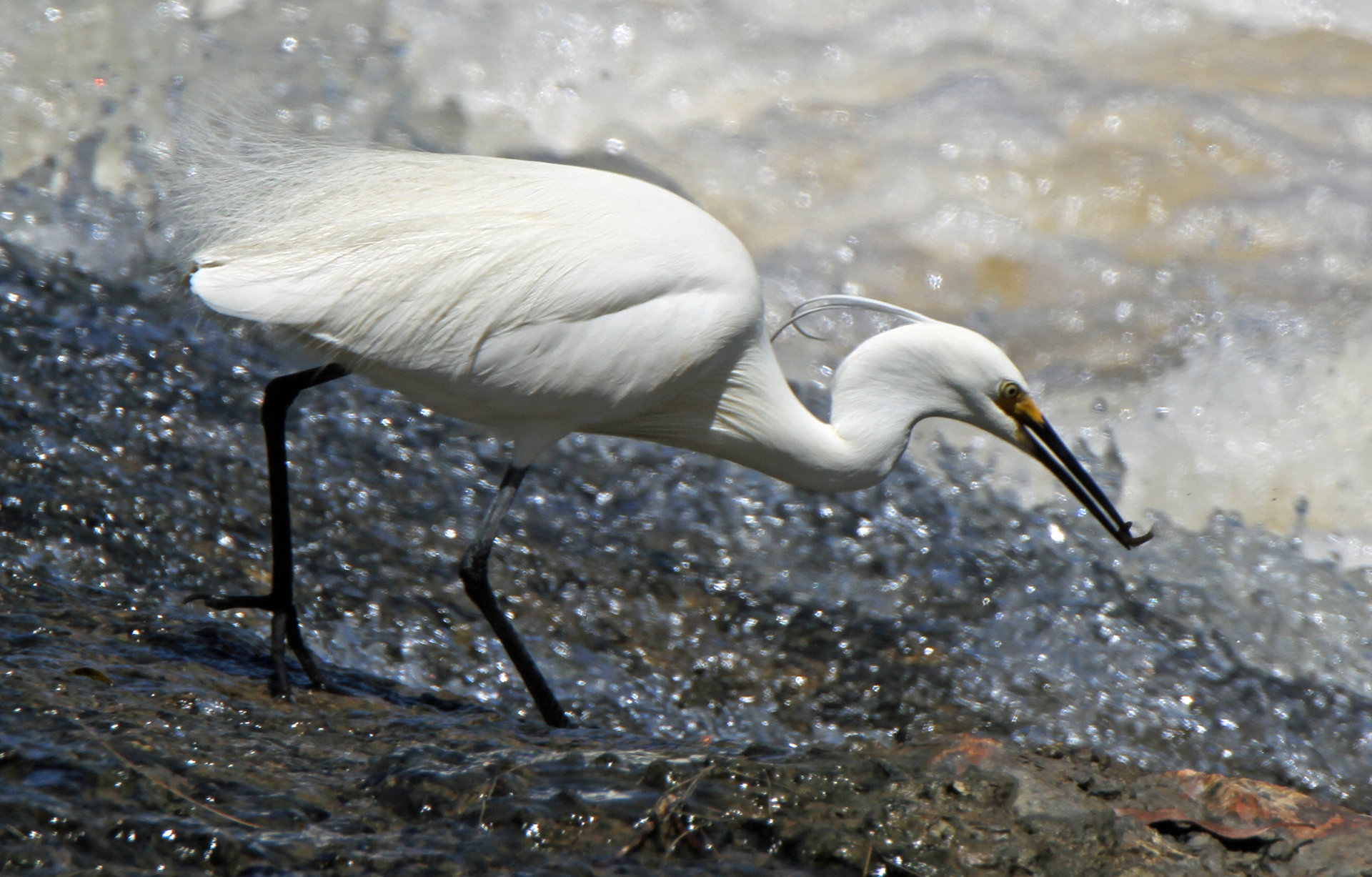The popular image of egrets is of tall, slender, dignified white birds moving slowly and elegantly through reeds and shallows, ever watchful for prey. Occasionally they lunge at hapless victims with their dagger-like bills then return to their previous calm. Little Egrets are the exception. They are more likely to be seen leaping and prancing about, plumes flicking, wings raised, legs stirring, grabbing their prey as it flees in panic from their frenetic activity. They sometimes follow other water birds, snatching small animals disturbed by their feet. I have seen one feed with a Royal Spoonbill, and another follow a Little Black Cormorant in shallow water. Very occasionally, they behave like other Egrets and simply stand and wait.

All four Egret species are found throughout Queensland, and Pacific Reef Herons are found along the length of our coastline, though may be more common in the north. Little Egrets are recorded much more frequently near the coast, with inland sightings being sparse. There are two subspecies of Little Egret. The nominate subspecies (E. g. gazetta), is found in Europe, Africa and Asia, with occasional sightings on the eastern seaboard of north America. The local subspecies (E. g. nigripes) is found in Australia and New Zealand and north as far as peninsular Malaysia and the Philippines.

Little Egrets are easily distinguished from other white egrets in Australia. They have long, fine black bills while Great, Plumed (formerly Intermediate) and Cattle Egrets and Pacific Reef Herons (white morph) have yellow bills. Juvenile Little Egrets may have yellow bills with dark tips – there is always an exception to the rules in bird identification, just to keep birders on their toes! In the breeding season, their lores and eyes briefly blush red just before incubation begins. Their legs are always black, and in the subspecies seen in Australia the soles of the feet are dull yellow. In the nominate subspecies the entire feet are a startling bright yellow, almost like socks. EBird has many illustrations of this.

In breeding plumage, Little Egrets have fine filmy plumes back and front, as well as two long plumes on their napes which clearly identify them from other white Egrets. They are 55 to 65 cm in length. Cattle Egrets are smaller, at 48 to 53 cm, but are noticeably chunkier, with shorter necks. Plumed Egrets are slightly larger but not as finely built, and Great Egrets are much larger at 85 to 105 cm. Pacific Reef Herons, shoreline specialists, have noticeably shorter legs.
Like other Egrets, Little Egrets suffered many setbacks in Europe and elsewhere. Egrets were extensively hunted in medieval times, with 1000 egrets being served at the banquet to celebrate the enthronement of George Neville as Archbishop of York in 1465. By the mid-16th century, the monarch’s staff had to send further south for egrets for the royal table. In the 19th century, they were slaughtered for their plumes. Conservation laws were introduced in Europe in the mid twentieth century, and numbers have since increased. Their distribution has expanded, and by this century they were breeding in France, the Netherlands, Ireland and Britain.
In 1879, “Bush Naturalist”, writing in the Courier Mail, reported the presence in Queensland of a “beautiful little white egret…in which the plumes spring from the back of the head” discovered by the late Mr Coxen. The same article reports the use of egret plumes in ladies’ fashion. They were, oddly, known as “osprey” or “aigrettes”. By 1898 the Sydney Daily Telegraph, in its ladies’ fashion pages, reported in graphic and gruesome detail the collection of plumes from breeding Little Egrets, captured just after their eggs have hatched when they were reluctant to leave their nests. It also reported the Princess of Wales (later Queen Alexandra) asserting that she always sought information on the source of feathers in her bonnets and never “knowingly wears any feathers or plumes that it has involved cruelty to obtain.” (Sat 9 July, p 7) Perhaps finally the tide was turning against the slaughter of birds for the fashion industry. In 1906, the Royal Society for the Protection of Birds (RSPB) reported that Queen Alexandra’s letter to the RSPB had made “osprey” plumes unfashionable in the United Kingdom and had also had an impact in the United States. I have to admit that when I was reading the history of my family I discovered that my great-grandmother wore “ospreys” to her daughter’s wedding in 1909! My apologies to Little Egrets. In 1915, plumes were worth more by weight than gold. The international trade in feathers ended in about 1921 and many species were saved from extinction.
Data from the Australian Bird and Bat Banding Scheme database contains only 19 records of recoveries of banded Little Egrets. The furthest distance from first capture to recapture was 3293 km, from NSW to New Britain in PNG. The average distance is 1052 km, so from this it could be assumed that Little Egrets are mobile in every sense. It is likely that they move in response to rain, congregating in drying wetlands where prey is concentrated and easy to catch. Their food consists of fish, aquatic insects, crustaceans and spiders caught at depths of up to 15cm. They feed in salt, brackish or fresh water, along shores, in estuaries, saltmarshes, lagoons and flooded grassland. They are often solitary while feeding but may rest in small groups when they are not active.

Little Egrets breed colonially with other Egret species and wading birds, as well as cormorants. Sites are close to or overhanging water, and Little Egrets usually choose to nest in a group within the colony. I have seen nests at Apex Lake at Gatton, together with Cattle Egrets and other species.
References
- McKilligan, Neil (2005) Herons, Egrets and Bitterns: Their biology and conservation in Australia. Melbourne: CSIRO
- Marchant, S & PJ Higgins (eds )(1990) Handbook of Australian, New Zealand and Antarctic Birds, Vol 1, Part B Ratites to Ducks Melbourne: OUP
Thanks also to Wikipedia and to the National Library of Australia’s Trove.


